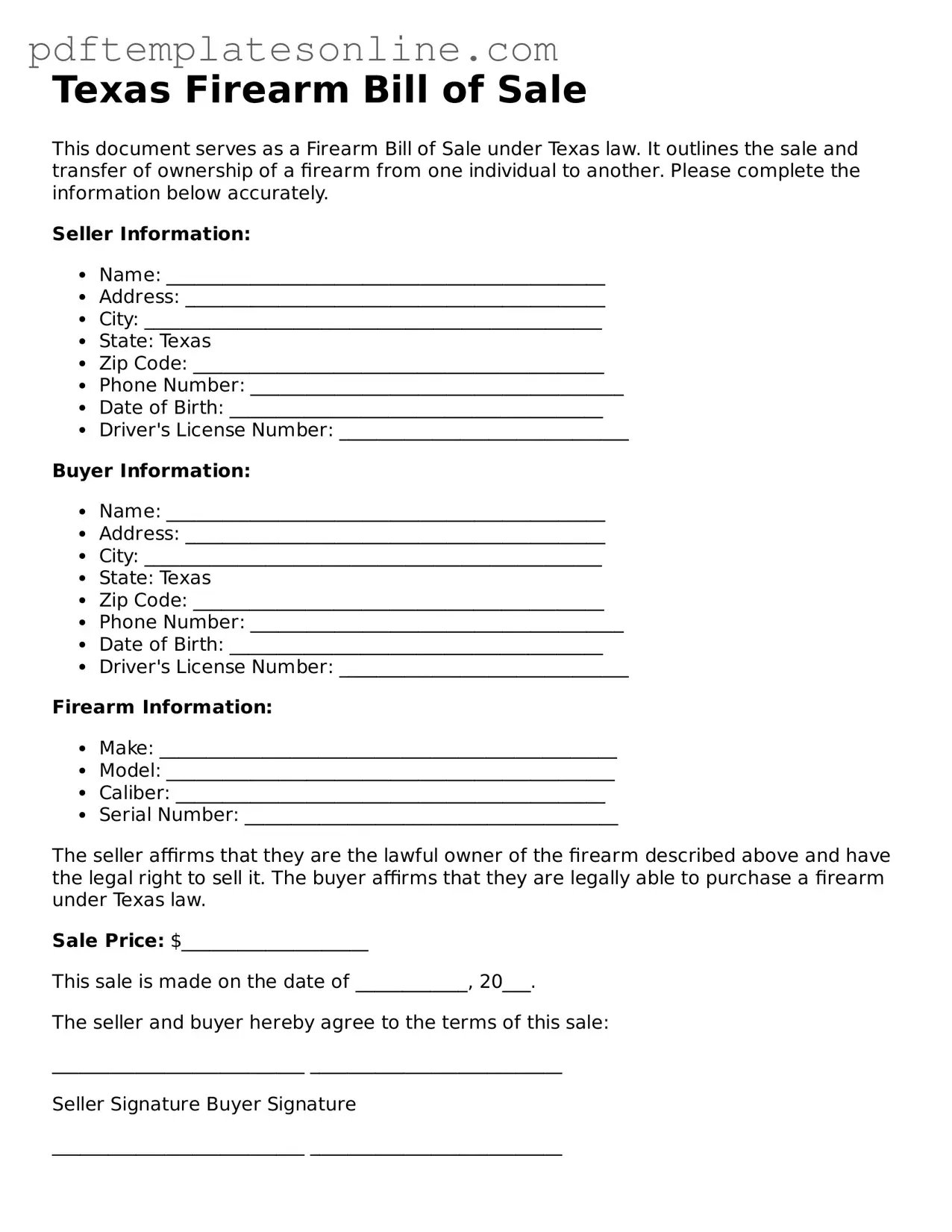Completing the Texas Firearm Bill of Sale form is a critical step for individuals engaging in the private sale of firearms. However, many make common mistakes that can complicate the transaction. Understanding these pitfalls can help ensure a smooth process.
One frequent error is failing to provide accurate information about the firearm being sold. The form requires specific details such as the make, model, caliber, and serial number. Omitting any of this information can lead to confusion or disputes later on. It is essential to double-check these details before finalizing the sale.
Another mistake involves incorrect identification of the buyer and seller. Both parties must provide their full names, addresses, and, in some cases, driver's license numbers. Inaccurate or incomplete personal information can hinder the legal validity of the sale. Ensuring that all names are spelled correctly and addresses are current is crucial.
Some individuals neglect to sign the form. A signature is not just a formality; it signifies the agreement between the buyer and seller. Without signatures, the document may be considered invalid. Both parties should ensure that they sign and date the form at the time of the transaction.
In addition, failing to keep a copy of the completed Bill of Sale is a common oversight. After the sale, both parties should retain a copy for their records. This document serves as proof of the transaction and can be vital if any legal questions arise in the future.
People sometimes overlook the importance of verifying the buyer's eligibility to purchase a firearm. In Texas, certain individuals are prohibited from owning firearms, including convicted felons and those with restraining orders. It is prudent to ask for identification and confirm that the buyer meets all legal requirements before proceeding with the sale.
Another mistake is not filling out the form in its entirety. Leaving sections blank can create ambiguity and potential legal issues. Each section of the form serves a purpose, and all required fields should be completed to avoid complications.
Additionally, some sellers may fail to understand the implications of selling a firearm to a minor. In Texas, it is illegal to sell a firearm to someone under the age of 18. Sellers must verify the age of the buyer to comply with state laws and avoid legal repercussions.
Finally, individuals may not be aware of the importance of documenting any conditions of the sale. If there are any special agreements, such as payment plans or conditions regarding the firearm's condition, these should be noted on the Bill of Sale. Clarity in these agreements can prevent misunderstandings and disputes in the future.
